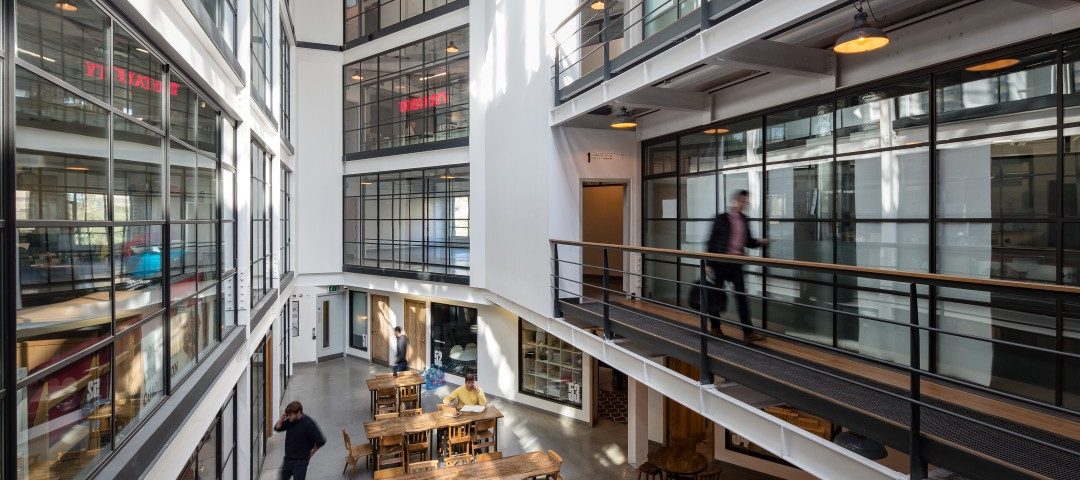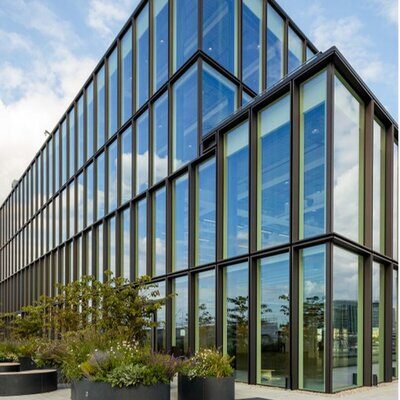
No job too big or small for our September Supplier Dare Devil
October 15, 2020
Ashdown Phillips raise over £4,000 for LandAid’s Steptober Appeal
October 28, 2020Associate Director Nikki Gibson examines The Future of Flexible Workspaces following COVID-19

In light of the COVID-19 pandemic, a huge amount of attention has turned to workplaces and raised the question: will the demand for flexible spaces increase?
My opinion, which seems to be shared with many industry experts, is a very firm “yes”.
The flexible office market has been growing over the past decade, and prior to the COVID-19 pandemic it was predicted by The Instant Group, that we would need a further 10,100 flexible workspaces across the UK by 2030 to accommodate the increasing demand.
Now, considering the future post-COVID, there are a number of reasons why this demand is likely to increase further.
Decision making
Those businesses who were on the cusp of committing to long term leases have been inclined to kick the decision down the road and opt for more flexible options, while we work through these uncertain times.
As part of this, some occupiers have reduced their space requirements, which seemingly could be a knee jerk reaction to the situation but, right now, it is important to ensure you have the right space and fit-out to enable your teams to safely return to the workplace.
Philip Vickery, Managing Director of office fit-out firm Total Projects UK Ltd, says the company has remained very active throughout the lockdown period, implementing numerous innovative alterations to a variety of different types of office space to make them COVID secure. On larger scale projects, we are seeing a move away from shared ‘bench’ style workstations with generous breakout spaces to a utilisation of larger, individually-spaced workstations with smaller common areas. Rather than reducing floor area, it seems business are requiring a smarter approach to space planning and configuration.
Returning to the workplace
Employers are also navigating the complexity of their employees returning to the workplace; having to consider the needs of the business whilst adhering to government guidelines and balancing those with the wellbeing of their teams. There is a strong feeling that many companies are losing sight of their brand and culture by working remotely, so employers are keen to reignite the crucial face to face interactions.
The Savills Office Fit Out Survey June 2020 explored the optimum level between working from home and attending the workplace to achieve work/life balance, physical and mental health. The results clearly show that holistic health & wellbeing is best achieved through a balance of home and office working. The same survey also highlighted that it was the younger generation who were much more keen to get back to the workplace and specifically mentioned the lack of mentoring and learning which cannot be effectively achieved whilst working remotely. Of the things employees missed most about being in the office, group activities, networking, collaborating and the face to face interaction ranked most highly.
Swing towards service and flexibility
It has been reported that 8 million square feet of traditionally let space has been vacated across the UK since March 2020. It is likely that a proportion of this will end up being converted to flexible workspace.
There has been an increase in start-up enterprises over the course of the pandemic, possibly as a result of job losses and furlough giving people the time to re-evaluate and take a leap of faith. The likelihood is that when they are able to take the next step to office space, businesses are more likely to choose a flexible agreement. Flexibility provides comfort, enabling companies in their infancy to commit without added stress. Our own research also shows that if you give occupiers flexibility they do not necessarily use it, it just provides peace of mind and allows for a more fluid strategy.
The serviced office space at Milton Park in Oxfordshire,which we at Ashdown Phillips run in partnership with the Landlord, MEPC, has a staggering average occupancy length of 3 years, 5 months and 5 days. Typically, occupiers are on a 2-year licence with a 4-week rolling break option. Our research also expands on this, with those who continue to stay in this kind of office space valuing both the service they receive and the convenience of being in a serviced building, as it allows them to focus on running their business. This data was sourced in October 2020.
Philip Campbell, Commercial Director of Milton Park, says “The Innovation Centre is an important part of our offering here at Milton Park. We are able to attract and retain small and medium sized companies to the estate, who often grow and, in some cases, move out onto the wider estate on more traditional leases.
Service levels are extremely important to us and feedback from our regular occupier surveys tells us that the Innovation Centre excels in this area and this is just one of the reasons why we based ourselves here. As the Landlord, by partnering with a property manager such as Ashdown Phillips to run the Centre, we are able to build direct relationships with the occupiers much earlier.”
Across our flexible office portfolio, occupancy has remained high throughout COVID-19 and new enquires continue to come in and new lettings have completed.
Some companies who have adapted well to working from home have still not lost sight of the benefit of meeting their teams and colleagues face to face. So, we may see an increased demand for meeting space. This market was hit badly by the pandemic, however we are seeing signs of a rapid recovery.
Location, Location, Location
Traditionally, business leaders would want to locate their businesses in city centres, on the basis that this is where the talent pool exists. The pandemic has taught us how we can work well remotely and with a more dispersed workforce, therefore we may start to see corporate businesses taking space in more out of town locations, with the move towards hybrid offices and home working.
City Centres have a huge amount to offer, but as a result of the pandemic, people have been reluctant to get back to using public transport and heading to busy areas. They are likely to recover, but it may take them longer than accessible business parks and rural locations to get back up to speed.
The Future
We are now in an occupier market where a high level of service has become an expectation. Occupiers are asking for greater flexibility from their landlords and therefore landlords are having to respond and adapt. Reviewing their lease structures and adding a highly flexible offering to their portfolio is going to be vital moving forward. Landlords are no longer able to just focus on spaces that collect cash; they now need to listen to their occupiers and adapt to their needs and desires.
Some flexible office operators are now offering to run spaces in partnership with the Landlord as Property Week have reported. This is the model we have worked to for over 5 years, delivering exceptional results for our clients and allowing them to remain ultimately in control. With the growing demand on flexible space, we are having more conversations with landlords who are considering the conversion of some of their harder to let spaces into flexible working environments and for us to run them in partnership.
Building wellness facilities and sustainability considerations were previously seen as a perk from occupiers but are now considered critical by many. For small and medium sized businesses this will be another element of attraction to flexible office spaces. Even if they consider the cost as a premium, the benefit of providing their employees with a comprehensive list of wellbeing features and services is a must in an evolving working environment.
As the physical elements of office space changes so do the technologies to assist and enhance building wellness. Projects that have been in development are now being accelerated and we will start to see smarter buildings designed to keep people safe, healthy and productive.
Summary
The evidence shows that the office space is not dead and flexible options are on the up. There will continue to be a requirement for office space, but occupier requirements have changed and will continue to do so. It will be those landlords and employers that adapt best to these changes and challenges that will rise to the top.
Nikki Gibson, Associate Director




